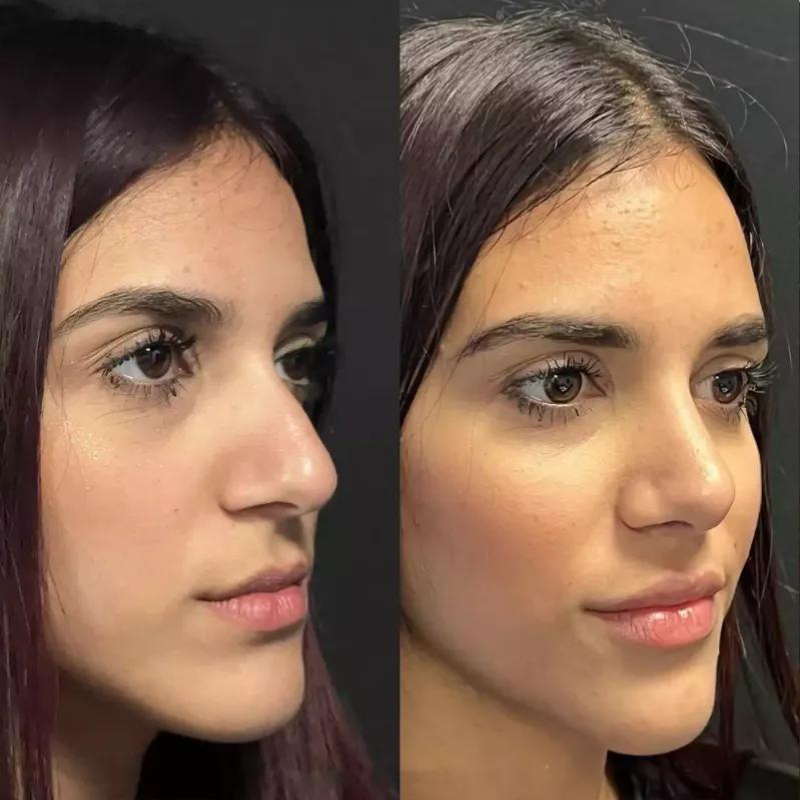Undergoing rhinoplasty surgery is a significant step toward achieving your desired facial appearance, but the journey doesn’t end once the surgery is over. Swelling and bruising are common aspects of the recovery process, and how you handle them can greatly influence your overall rhinoplasty results. In this blog, we will discuss how to manage swelling and bruising after your procedure, especially if you’ve chosen to have rhinoplasty in Dubai. We will also cover various rhinoplasty treatment options and what to expect during your recovery.
Understanding Swelling and Bruising After Rhinoplasty
Why Swelling and Bruising Occur
Swelling and bruising are natural responses to the surgical process. When you undergo rhinoplasty surgery, tissues in and around the nose are manipulated, leading to a temporary increase in blood flow and fluid retention in the area. This is the body’s way of healing and protecting the affected tissues.
The Timeline of Swelling and Bruising
While every patient is different, most experience the most significant swelling and bruising in the first few days after surgery. Generally, bruising starts to fade within 7-10 days, and swelling decreases significantly within the first few weeks. However, subtle swelling can persist for several months, and it can take up to a year for the final rhinoplasty results to fully emerge.
Tips for Managing Swelling and Bruising
Follow Your Surgeon’s Instructions
The first and most important step in managing swelling and bruising is to closely follow your surgeon’s post-operative instructions. Every patient’s needs are unique, and your surgeon will provide you with specific guidance tailored to your rhinoplasty procedures in Dubai.
Keep Your Head Elevated
Keeping your head elevated, especially while sleeping, helps reduce swelling. Elevation promotes proper blood circulation and minimizes fluid retention in the facial area. It’s recommended to use extra pillows or a recliner to keep your head above your heart for the first few weeks of rhinoplasty recovery.
Apply Cold Compresses
Applying cold compresses to the area around your nose (not directly on the nose) can help reduce swelling and minimize bruising. Cold therapy is most effective in the first 48 hours after surgery. Be sure to use the compresses in intervals—about 20 minutes on and 20 minutes off—to prevent any damage to the skin.
Stay Hydrated and Maintain a Healthy Diet
Hydration is crucial for the body’s healing process. Drinking plenty of water helps flush out toxins and reduces fluid retention. Additionally, maintaining a healthy diet rich in vitamins and minerals can promote faster healing and reduce inflammation. Foods high in Vitamin C and protein are particularly beneficial during rhinoplasty recovery.
Avoid Strenuous Activities
Engaging in strenuous activities can increase blood pressure and lead to more swelling and bruising. It’s important to avoid heavy lifting, vigorous exercise, and bending over for at least two weeks after surgery. Light walking is encouraged as it promotes circulation and aids in reducing swelling.
Be Patient
Patience is key when recovering from rhinoplasty. The healing process varies from person to person, and it’s important to give your body the time it needs to heal properly. Rushing the process or not following post-operative care instructions can negatively impact your rhinoplasty results.
Different Types of Rhinoplasty Procedures and Their Impact on Recovery
Rhinoplasty Nose Surgery
Rhinoplasty nose surgery is the most common type of rhinoplasty and is focused on reshaping or resizing the nose. Swelling and bruising can be expected after this type of surgery, and following the recovery tips mentioned above can help minimize these effects.
Male Rhinoplasty
Male rhinoplasty is specifically designed to maintain a masculine appearance while enhancing the nose’s shape. The recovery process and the extent of swelling and bruising can vary depending on the specific changes made during surgery.
Ethnic Rhinoplasty
Ethnic rhinoplasty aims to enhance the nose’s appearance while preserving ethnic characteristics. This procedure may involve different techniques that can influence the level of swelling and bruising. It’s important to follow your surgeon’s specific recovery guidelines to ensure optimal results.
Revision Rhinoplasty
Revision rhinoplasty is performed to correct or improve the results of a previous rhinoplasty. Since this surgery can be more complex, patients may experience more swelling and a longer recovery period. Following all recovery instructions is crucial for achieving the desired outcome.
Asian Rhinoplasty
Asian rhinoplasty is tailored to the unique anatomical features of Asian patients, often focusing on subtle enhancements. Swelling and bruising after this procedure can vary, but the general recovery tips still apply.
Septoplasty
Septoplasty is primarily a functional surgery aimed at correcting a deviated septum. Although it is not a cosmetic procedure, it may be performed in conjunction with rhinoplasty. The level of swelling and bruising may differ, and proper post-operative care is essential for recovery.
Considering Rhinoplasty in Dubai
Rhinoplasty in Dubai offers a range of rhinoplasty treatment options tailored to meet diverse needs. The rhinoplasty cost in Dubai typically ranges from AED 23,299 to AED 30,000, depending on the complexity of the procedure and the surgeon’s experience. When choosing a surgeon, it’s important to consider not just the cost but also the quality of care and the expertise of the surgeon to ensure the best possible rhinoplasty results.
Conclusion: The Importance of Choosing the Right Surgeon
Managing swelling and bruising after rhinoplasty is an essential part of the recovery process that requires patience, proper care, and following your surgeon’s advice. Whether you’re considering rhinoplasty nose surgery, ethnic rhinoplasty, or revision rhinoplasty, choosing one of the best plastic surgeons in Dubai will help ensure a smooth recovery and the best possible results. With experienced professionals and advanced medical facilities, Dubai remains a top destination for those seeking exceptional rhinoplasty outcomes.







